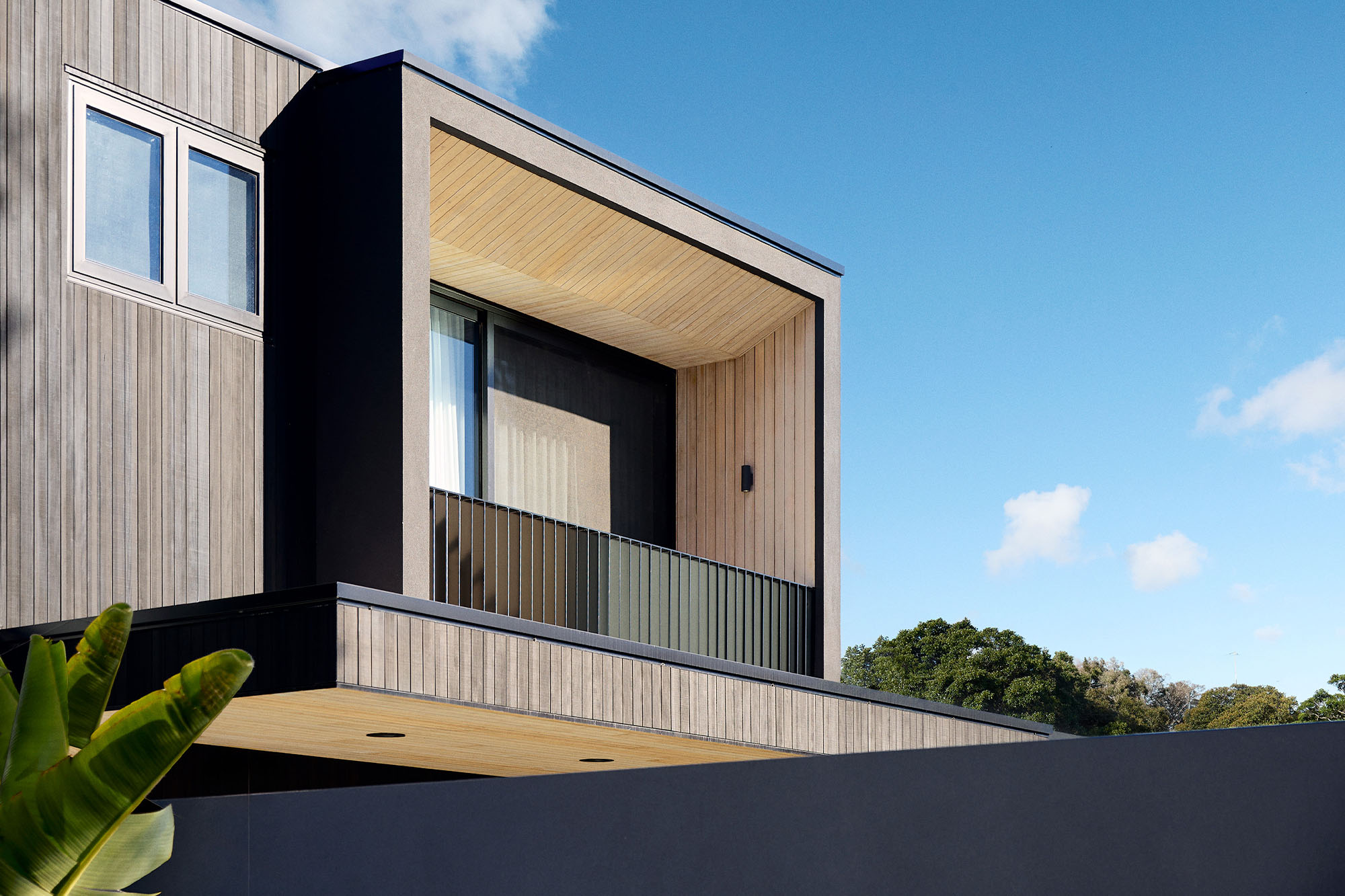Many homeowners are unsure if their deck can hold a hot tub, but building a deck around a hot tub is a great way to add luxury and practical outdoor space to your home.
This article will help you figure out if your deck can support the heavy weight of a hot tub and provides detailed advice on how to build a deck that can safely support a hot tub to boost your outdoor fun!
First things First: Can Your Existing Deck Support a Hot Tub?

Before you plan the installation of a hot tub, it’s crucial to determine whether your existing deck can handle the extra load:
- A fully loaded hot tub can weigh as much as a small car, which means your deck needs to be strong enough to support around 100 pounds per square foot.
- Assessing the strength of your deck involves checking the joists, beams, and overall structural integrity.
- For raised or elevated decks, additional support (both vertical and horizontal) may be necessary in order to ensure stability.
Consulting with a structural engineer can provide peace of mind and prevent costly mistakes if unsure.
Choosing the Right Hot Tub for Your 10×10 Deck
When planning to enhance your outdoor living space with both a deck and a hot tub, it’s crucial to choose a hot tub that fits well within the confines of the deck size you are planning—in this case, a 10’ x 10’ deck.
Here’s how to ensure that your selection is optimal:
Hot Tub Size
Typically, hot tubs come in various sizes that are usually defined by the number of people they can accommodate. For a 10’ x 10’ deck:
- Small Hot Tubs are about 5’ x 5’ and can seat 2-3 people comfortably.
- Medium Hot Tubs measure around 6’ to 7’ on each side and can accommodate 4-5 people.
- Larger Hot Tubs: At 7’ to 8’ are spacious enough for 5-7 people but may use a substantial portion of the deck space.
Space Allocation
Beyond the hot tub’s footprint, you must account for:
- Access and Safety: Ensure that there is enough space around the hot tub to safely enter and exit. This is crucial for preventing accidents and also for easy maintenance.
- Maintenance Access: Leave adequate space around the hot tub for routine maintenance and emergency repairs. This includes space to remove and replace the cover, if necessary.
Practical Considerations
Choose a hot tub that fits well on your deck without taking up too much space. Ideally, a hot tub up to 7’ x 7’ works great on a 10’ x 10’ deck. This size leaves enough space for it to function properly and look good without risking the deck’s structure or safety.
Step-by-Step Construction Guide on How to Build a 10’ x 10’ Deck Around a Hot Tub

Site Preparation and Measurements
First, make sure that the site where you plan to build the deck is suitable. Clear any debris and level the ground. For a 10’ x 10’ deck, precisely mark out the area. Keep in mind that you’ll need a solid foundation to support the weight of a hot tub. Use stakes and string to outline the deck area.
Laying the Foundation – If setting Hot Tub on a Concrete Slab
Depending on the ground conditions, you may need to pour a concrete slab or use concrete footings to support the deck’s structure. For a hot tub, reinforcing the slab with rebar or mesh provides additional stability and support. Ensure that the foundation is perfectly level and set slightly above ground to prevent water accumulation.
Choosing the Right Framing Materials for Your Hot Tub Deck
For the structural framing of a deck designed to support a hot tub, choosing the right type of wood is crucial for ensuring both durability and strength. While pressure-treated Southern Yellow Pine is commonly used because of its cost-effectiveness and resistance to rot and pests, there are other types of wood that provide superior strength and resistance to the elements:
Douglas Fir
Douglas Fir is known for its strength and dimensional stability, which makes it a popular choice for construction and framing. It has a high strength-to-weight ratio, which is ideal for supporting heavy loads such as hot tubs. It also handles the stress of changes in weather conditions well, although it should be properly treated or sealed for outdoor use to prevent decay.
Hemlock
Hemlock is another strong, stable wood that is often used for framing and building. It’s less expensive than Douglas Fir, but still provides good load-bearing capacity and resistance to warping and twisting. Like Douglas Fir, it needs to be treated if used outdoors to enhance its resistance to moisture and decay.
Treated Engineered Wood
For areas with extreme weather conditions or where extra durability is needed, treated engineered wood products can be used for framing. These products are designed to resist moisture, decay, and pests more effectively than natural wood. They are also engineered to bear heavy loads, which is ideal for a deck that must support a hot tub.
Each of these wood types needs to be treated or sealed if they are to be used outdoors, especially in a deck design that includes a hot tub. It helps to extend the life of the wood and maintain its structural integrity against the elements.
Framing the Deck
Begin framing by setting 6” x 6” (8” x 8”s may be required by the architect/engineer) posts in the concrete footings, and make sure that they are cut to the right height and they are perfectly vertical. For a 10 x 10’ deck supporting a hot tub, use 2” x 12” joists to ensure adequate support. Install rim joists and the 2” x 12” floor joists, using joist hangers for added stability.
The joists should be spaced closer together, typically 12” on center, to effectively support the additional weight of the hot tub (always refer to the engineering specifications).
Adding Structural Support for the Hot Tub
Integrate additional beams directly under the spot where the hot tub will sit. This may involve adjusting the standard 10’ x 10’ layout to accommodate extra support beams. Ensure that the beams are securely connected to the deck’s frame and reinforced appropriately.
Installing the Decking
There are many options for the finished deck surface available from Lumber Plus including:
Hardwood
Hardwood decking from Lumber Plus combines the natural beauty and unique character of exotic woods with impressive durability and resistance to wear. Their selection includes species like Ipe and Angelim. These are known for their hardness, longevity, and natural resistance to rot, pests, and weathering. This makes them perfect choices for a visually stunning hot tub deck that stands the test of time.
Composite
Composite decking decking is a practical, low-maintenance alternative to traditional hardwood. Made from a blend of wood fibers and recycled plastics, it provides the aesthetic appeal of wood without the need for regular staining or sealing. Lumber Plus features a variety of composite decking options for a durable, weather-resistant surface that’s perfect for a hot tub environment.
PVC
PVC decking from Lumber Plus is the ultimate low-maintenance solution for those looking to invest in a long-lasting deck surface. It’s engineered for exceptional resistance to stains, scratches, and fading to ensure a beautiful finish that withstands the test of time and the elements. Ideal for hot tub surrounds, PVC decking combines the elegance of natural wood with the practical benefits of synthetic materials to provide a seamless and stylish addition to any outdoor space.
Deck Tiles
Deck Tiles at Lumber Plus are an innovative and hassle-free way to enhance your hot tub area. Easy to install and available in a variety of materials and finishes, these tiles provide a quick solution to create a stylish and durable deck surface.
Finishing Touches

Once the deck surface is complete, install railings, steps, or other features to enhance accessibility and safety. For aesthetic appeal, consider adding built-in benches or planters, which can also be constructed using materials from Lumber Plus. Ensure that all finishes and fixtures are securely installed, and check for any sharp edges or loose components.
By following these steps, you can build a robust and stylish 10’ x 10’ deck that safely accommodates a hot tub in order to enhance your outdoor living space.
Always refer to local building codes and regulations to ensure compliance throughout your project.
Incorporating Electrical and Plumbing
Don’t forget to plan for the necessary electrical and plumbing installations. They should be put in place before finalizing the deck construction. It’s often best to hire a professional to handle these types of installations to make sure that they meet local building codes and safety standards.
Maintenance and Upkeep
Maintaining your new deck and hot tub involves regular cleaning and periodic checks of the wood and hardware for any signs of wear or damage. Using Lumber Plus high-quality materials can reduce maintenance needs. Regular upkeep is still necessary to ensure that your deck remains a safe and beautiful place for relaxation.
Upgrade Your Hot Tub Experience with Premium Decking from Lumber Plus

Now that you know how to build a deck around a hot tub, it’s time to improve your hot tub setting with the exceptional quality and elegance of premium decking materials from Lumber Plus.
With our wide selection of decking solutions, including hardwood, composite, PVC decking, and deck tiles, you can find a product that fits your budget and design preferences.
Contact us today for more information!






